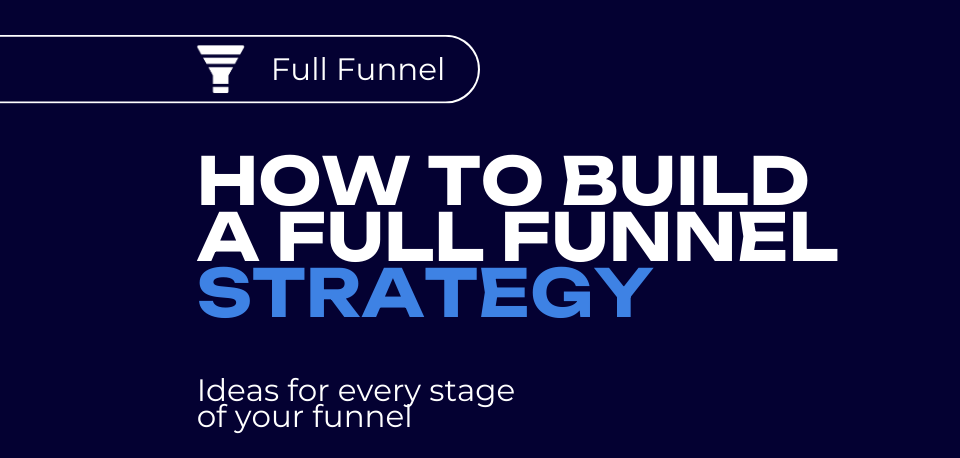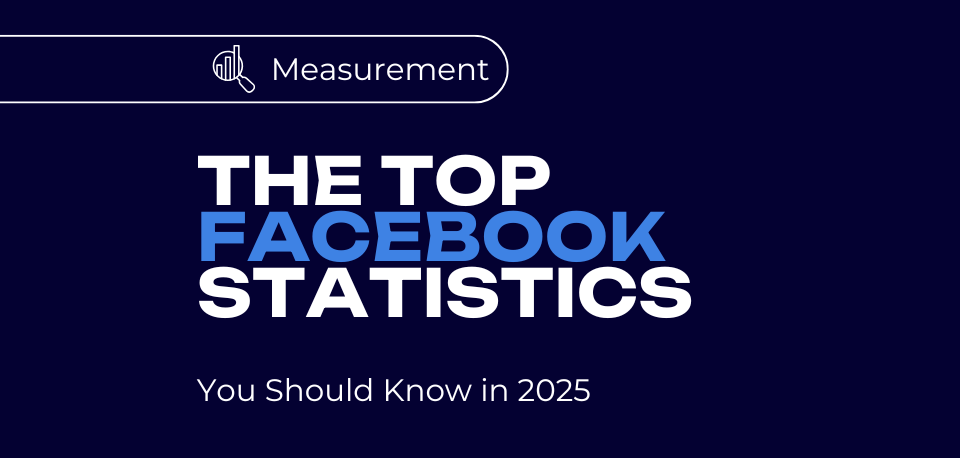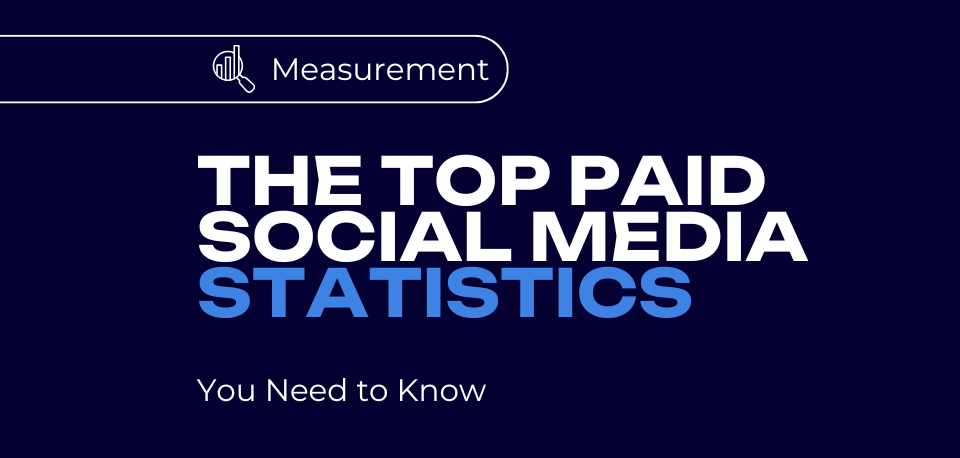If you’re not investing in your own full funnel marketing strategy yet, you should be. We’re not just saying that as full funnel marketing experts.
Countless studies show that full funnel marketing pays dividends.
McKinsey found that full-funnel marketing strategies can increase the ROI of your promotional techniques by 20%. Elsewhere, Google discovered that full-funnel marketing techniques boost ROAS by around 45%.
Plus, we have countless customer success stories on this website that show how full-funnel marketing have increased revenue, and retention rates for our clients, while minimizing customer acquisition costs. Full-funnel marketing works, because it focuses on connecting with and engaging customers at every stage their purchasing journey.
It helps you build relationships with buyers, and nurture brand awareness, driving sustainable, long-term growth. The trouble is, creating your own full funnel marketing strategy can be complex.
Content
What is a Full Funnel Marketing Strategy?
A full funnel marketing strategy is an approach to promoting your company, building brand awareness, nurturing customers, and increasing sales that considers every stage of the buyer journey.
Check out our guide to full funnel marketing if you want a deeper look at how full-funnel marketing works, and the benefits it can deliver to your business.
On a broad scale, however, what you need to know is that with full funnel marketing, you take a holistic approach to creating targeted messages, and using omnichannel tactics to guide your customers through every stage of their purchasing experience. This means crafting a strategy for:
- TOFU (Top of the Funnel) marketing: TOFU marketing is about building brand awareness and engaging customers at the beginning of their purchasing journey. It’s not about selling products, but rather expanding your reach to new customers, showing them that you understand their pain points and goals, and building thought leadership.
- MOFU (Middle of the Funnel) marketing: MOFU marketing involves nurturing relationships with customers that are aware of your products, services, or brand, but may not be ready to buy something straight away. Here you focus on educating your customers, helping them compare products, and earning their trust.
- BOFU (Bottom of the Funnel) marketing: BOFU marketing is where you begin to focus on conversions. You might use targeted paid social or search ads to deliver deals or offers to customers, or create unique landing pages.
Beyond this, full funnel marketing can also include “post funnel” tactics. This means finding ways to continuously connect with your audience after they make a purchase. For instance you might use exclusive events or loyalty programs to help retain existing customers. Or you might convert buyers into advocates with referral programs and rewards.
How to Create a Full Funnel Marketing Strategy that Works
Full funnel marketing delivers results because it ensures you’re constantly strengthening your brand’s presence, and forging deeper connections with your audience. It’s a way to connect with and engage customers regardless of what their buyer journey might involve.
The result is higher sales, increased customer retention, and lower customer acquisition costs.
However, building a full funnel strategy takes work. You need to understand your customer’s journey, map out the funnel, create content for every stage, and even decide which metrics to monitor. Here’s your guide to building a full funnel marketing strategy.
Step 1: Customer Journey Mapping
Before you can start creating campaigns that holistically address the full marketing funnel, you need to know what that funnel looks like for your target audience. The standard “marketing funnel” is broken down into four key stages:
- Awareness: When customers are first made aware of a problem or goal.
- Consideration: When your customers are comparing solutions or products.
- Decision: When customers actually decide to purchase a product.
- Post-conversion: When you focus on retaining and delighting customers.
However, the journey customers take throughout each of these stages can vary. For instance, During the awareness stage, your customers might seek out answers to their problems by typing questions into Google, or connecting with other people on social media.
During the consideration phase, they might spend a lot of time reading reviews, checking out demo videos, or reading thought leadership content. Ultimately, to figure out the customer’s journey you need to put yourself in the shoes of your target audience. Imagine you were your ideal customer. What would prompt you to decide a solution like the one you offer is necessary?
What kind of questions would you need to answer before you made a purchase, and what channels would you use to find answers? Conducting focus groups, sending out surveys, and even reading up on market research can help you gather the data you need throughout the mapping process.
Step 2: Choose your Marketing Channels
Once you’ve mapped out your customer journey, you should have a clearer idea of which marketing channels you need to prioritize. Most of the time, a full-funnel marketing strategy will take an omnichannel approach. In other words, you won’t just focus on search engine optimization, content marketing, or email marketing.
Throughout your customer’s journey, you’ll strive to interact with them on different channels, depending on the type of content they’re going to need. While your channel mix might vary, we generally recommend focusing on two channels for rapid customer acquisition and reach: paid social (particularly on Meta-based channels with great reach), and paid search content.
Alongside those two channels, you might use SEO and organic content to build thought leadership and boost your visibility on the search engines over time. You could also invest in email marketing to nurture customers, and increase retention rates.
If you’re working with a full funnel marketing agency, like The Graygency, they should be able to use insights into your audience, and other data to guide you on how to allocate your budget across different marketing channels, based on your goals.
Step 3: Determine KPIs for your Full Funnel Marketing Strategy
This is where most guides to building a full funnel marketing strategy start to get confusing. Everyone seems to have their own “ideas” of what the best “KPIs” or Key Performance Indicators to measure at any stage of the funnel are.
If you want to really dive deeper into how each stage of your full-funnel strategy is impacting your bottom line, you need a holistic approach. At the top of the funnel, we usually recommend focusing on things like impressions, website traffic, SEO rankings, and click-through rates.
In the middle of the funnel, you might begin to look at different metrics, like how many leads you collect, the quality of the leads that end up on your website, and how much customers are engaging with and mentioning your brand.
At the bottom of the funnel, you’ll focus on conversions, customer lifetime value, and customer acquisition costs. Then, during post-funnel stages, you’ll need to start thinking about customer retention rates and satisfaction scores.
Monitoring all of these metrics alone isn’t enough. You also need to understand how they work together, and affect one another. That’s where working with a full funnel marketing agency becomes so valuable. They can help you see how the different methods you’re using are really paying off.
Step 4: Create your Content
Once you have your buyer journey map, an insight into the channels you’re going to be using, and a clear view of the metrics and KPIs you’ll need to monitor, it’s time to start creating content.
Your strategy to content creation will vary depending on the platforms you’re working with, but the key to success in any situation is making sure you consider your customer’s needs at all stages of the funnel. Customers who aren’t aware of your brand and products aren’t going to see a sales ad on Google Shopping and immediately convert, for instance.
They’ll need to understand what the solutions to their problem are first, and discover the benefits of working with your brand. Here’s a quick run-down of the types of content that work for each stage of the buyer funnel:
- TOFU: Paid ads, blog posts, videos, and social media posts that target customers with specific questions or concerns. Your TOFU content should meet your customers where they are, such as when they’re searching for answers to questions like: “What’s the best paint for a living room”, or “How do I improve my retention rates.”
- MOFU: Content, organic, or paid, that educates and informs your customers. Effective options include everything from product demo videos, to infographics, product guides, how-to videos, and educational whitepapers.
- BOFU: Paid ads, and organic posts that convince your customers to buy something. This could include pop-up ads, and paid ads on social media and search that deliver personalized deals and offers to customers. It could also include content that addresses buyer concerns, like FAQs about shipping times or warranties.
- Post-Conversion: During the post-conversion stage, your content should focus on delighting customers, earning their loyalty, and helping them make the most of their products. Focus on things like exclusive offers, onboarding guides, webinars, and product tips.
Step 5: Commit to Continuous Testing and Optimization
One of the most common questions we hear from our clients is: “How long does it take for full funnel marketing to work?” The unfortunate answer is that it’s difficult to know for certain.
The speed with which you start seeing results will depend on a range of factors (we break this down further in this guide). One of the most important things to keep in mind, however, is that an effective full-funnel marketing strategy is never truly finished.
You should be constantly experimenting, learning from the feedback and metrics you gather, and making tweaks to your campaigns. This is how you ensure you’re always improving the ROI from your full-funnel marketing campaigns, and making the most out of your budget.
Continuous testing and optimization is the key to staying one step ahead in the world of full funnel marketing. It’s also crucial at a time when your customer’s buyer journey, preferences, and priorities are likely to change on a constant basis.
Quick Tips for a Better Full Funnel Marketing Strategy
Following the steps above will help you to create an effective full funnel marketing strategy, but it takes a lot of work to ensure you’re getting the best results from your efforts. Here are some of the top tips we recommend following, based on our experience creating powerful full-funnel campaigns.
- Prioritize personalization: Today’s customers want businesses that understand their needs, pain points and expectations. They need to know that you genuinely empathize with the issues they’re facing, and are committed to delivering the solution that’s best for them. Personalizing every piece of content you create for the full marketing funnel is crucial to showing your customers that you don’t just see them as a source of income.
- Minimize friction: In today’s digital world, moving through a purchasing journey with a company should be effortless. Your customer should be able to discover your company when searching for a question online, then immediately follow you on social media to learn more about you, and finally purchase your products on any channel.
- Use multiple channels: Customers now have multiple different touchpoints they can use to interact with and learn about companies. Making sure your brand is visible in a range of environments, particularly across social media and search, will boost your reach, and increase your conversions. Don’t be afraid to branch out.
- Use incremental testing: Incrementality testing is a crucial strategy in full funnel marketing. It helps you to identify the exact results that come from the inclusion or exclusion of a specific strategy in your campaigns. This process will help you to make informed decisions about how to use your marketing budget.
- Seek expert support: Full funnel marketing takes a lot of work. Ultimately, working with an expert team is the best way to ensure you have the technology, expertise, and insights you need to make the right decisions. Don’t try to tackle the whole process alone, or you could end up wasting money on strategies that simply don’t work.
Build the Ultimate Full Funnel Marketing Strategy
A full funnel marketing strategy is the key to success in today’s competitive world. It boosts your chances of attracting a wider range of customers to your business, increasing conversions, and earning consumer loyalty. It can even help you to minimize customer acquisition costs at a time when the price of advertising is increasing astronomically.
But excelling at full funnel marketing isn’t easy. It requires a combination of data-driven insights, creativity, and expertise. At the Graygency, we specialize in full funnel marketing solutions that help businesses elevate their brand’s reputation, and increase revenue at scale.
Give yourself the edge you need as you invest in the era of full funnel marketing, by working with the right specialist. Contact The Graygency today to learn how we can help you develop a marketing strategy that drives sustainable growth.
Want to learn more about full funnel marketing ? Check out these other useful guides:
What is Full Funnel Marketing? Insights, Data and Tips
How Much Should You Invest in a Full Funnel Paid Media Strategy?
Full Funnel Paid Media: Everything you Need to Know
I’m creating content but i’m not seeing any results ?











